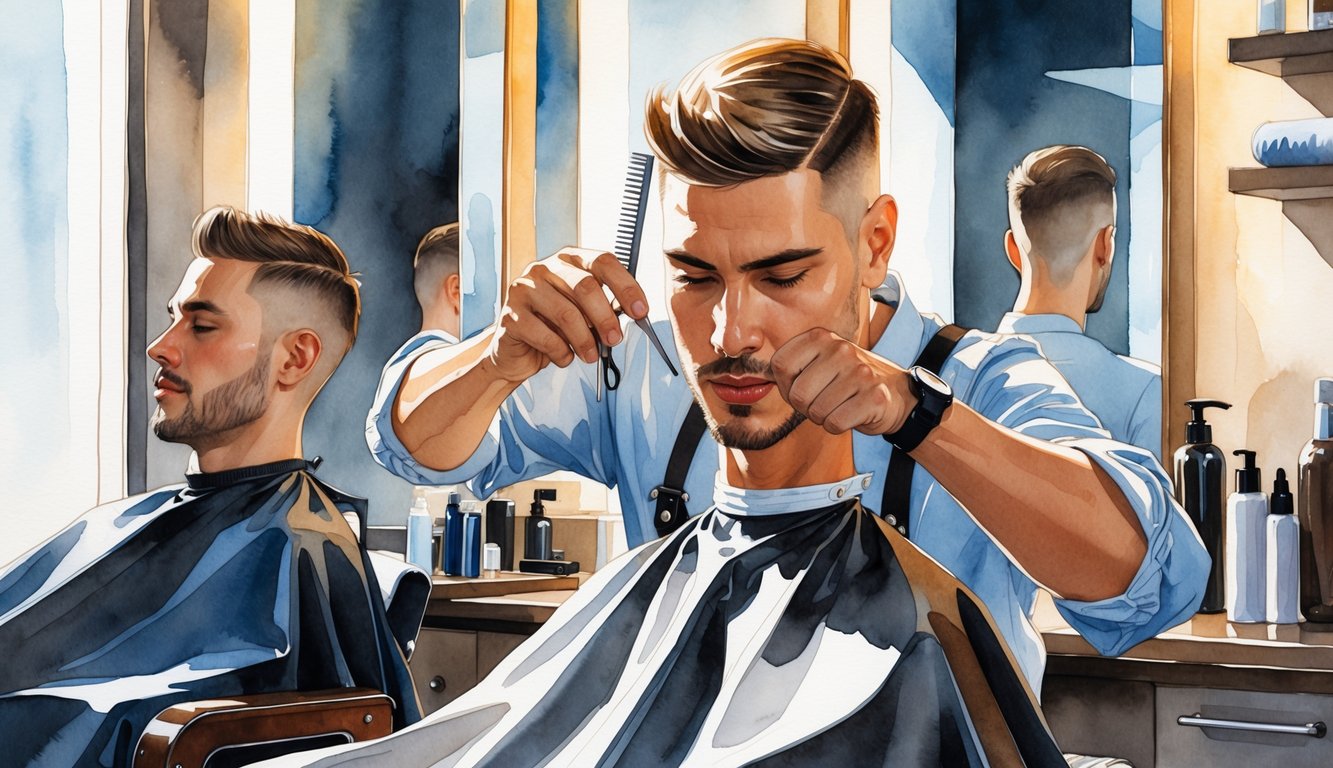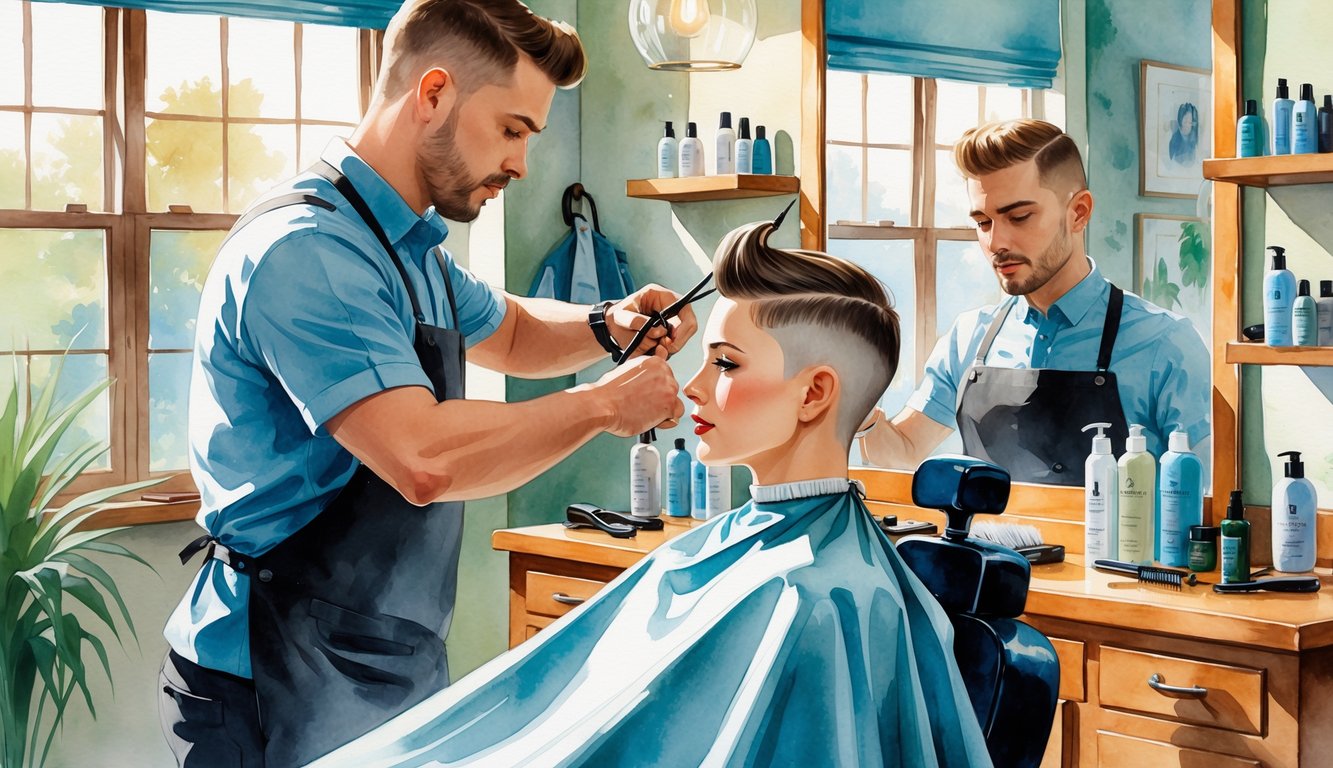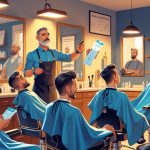
Effective Trimming and Edge Control
Let’s be honest, trimming at home is a gamble. You can do everything right and then the dog barks, you flinch, and boom—chunk missing. I use a Wahl Color Pro because it’s idiot-proof. Still can’t get the neckline straight. Hand mirror helps, but also, who has three hands? I use a wet comb or, if I’m desperate, a white eyeliner pencil to mark lines (learned that from a random NYC barber at a hotel). Lowest guard, gentle passes—dig in and you’ll regret it.
For edge control, I just slap on Murray’s Edgewax. It’s heavy, smells like grandpa, but it works. Over-trimmed your hairline? Yeah, me too. We all lie about it.
Precision Beard Trim at Home
Neck hair is the bane of my existence. Blending sideburns into a beard without that weird ledge? Still can’t do it right. Sectioning matters here too—draw your cheek and neck lines before buzzing anything. I’ve tried a pile of “precision trimmers”—Panasonic ER-GB42 is the only one that comes close to the Turkish barber down the street.
Always comb the beard out first. If you don’t, the trimmer skips and leaves you with a patchy mess. No beard bib? You’re just asking for a week of surprise hairs everywhere. My dermatologist nags me to slap on unscented aftershave balm or risk folliculitis, but I forget and then my neck itches for days. Seeing the bottom edge in my mirror is impossible. I just sort of guess and hope for the best.
Styling Short Hair Like a Professional

People talk a big game about styling short hair, but most of it’s nonsense. Skip one step, hair flops; use too much product, it’s an oil slick. There’s no middle ground. I’ve seen clients save real money by sticking to basics. Volume or smooth pixie—doesn’t matter. Nobody’s got time for a 10-step routine every morning. I sure don’t.
Blow-Drying for Volume and Texture
Forget what the salon posters say. Hold the brush loose, tip your head, blast your roots with a dryer—just one with 1800 watts, not some “ionic” spaceship. Start upside down (Robert Orgill swears by it), grab a vented round brush, work in tiny sections, and let each bit cool before you drop it. Babyliss Pro Nano Titanium is my go-to—dries fast, doesn’t fry the edges.
Everyone buys the wrong products. “Max hold” mousse? Unless you want helmet hair, skip it. I use a pea-size blob of Kevin.Murphy “Bedroom.Hair” after drying, finger-comb it, done. Twist random bits, walk away. If it’s humid, just give up on perfection. Sometimes I can’t even find my dryer and just leave with whatever happens. Nobody ever admits that.
Using Pomade for a Sleek Finish
Let’s get this straight: pomade isn’t magic. Thick stuff glues your hair, zero movement. Water-based, lightweight, that’s what you want—Layrite Super Hold is decent and doesn’t make you look plastic. Scoop less than you think, ignore the instructions.
I melt it in my hands, skim the surface, never roots to ends in one go unless you want flat hair. Cowlicks? Just dab the spot. Had a client, Eddie, who finally ditched his $15 edge control after switching to this. Shop mirrors lie—step outside and you’ll see all the streaks.
Quick Styling Tips for Every Hair Type
Fine hair? People act like it’s radioactive. Point is, short hair is about doing less. For wavy: skip heavy creams, use salt spray, scrunch, air dry, then wax a few pieces. Coarse hair? Argan oil before product, or you’ll be chasing flyaways all day.
Not every tip is worth the money. “Dry shampoo on clean hair for texture”—every stylist says it, and it actually works. Use it before your hair gets gross, and you’ll stretch cuts longer. Four to six weeks isn’t a rule. Flat irons? Don’t even start with me. Watched a client iron her curls for 40 minutes—looked the same, just sadder.
Here’s what never works:
| Hair Type | Avoid | Try This Instead |
|---|---|---|
| Fine | Heavy wax, thick pomade | Sea salt spray, light mousse |
| Wavy | Oil-heavy serums | Texture cream |
| Coarse | Sticky gels | Light smoothing oils |
Honestly, stop watching product tutorials that make everything harder. Less is more.
Maintaining Your Short Haircut Between Barber Visits

Keeping your cut sharp isn’t about fancy products or routines. It’s about bobby pins vanishing, cowlicks you can’t flatten, and dried-up clay you keep reusing. My regulars always want the secret, but it’s just what you do at home that really matters.
Simple Upkeep for Lasting Results
I’ve got clippers everywhere—$20 Wahl set, nothing fancy. Don’t touch the top if it looks uneven, just clean up the neckline and ears. Every week or so, two minutes, done. Neck fuzz grows faster than you think—84% of clients say it drives them nuts (Modern Barber, 2023). Conditioner? Barber school said “shampoo daily,” but that’s overkill. Every other day, maybe a leave-in spray (worth $8, honestly). Tried sunscreen on my part line—my hairdresser swears it slows thinning. SPF 30 sticks, even on hair. Maybe it’s true, maybe it isn’t.
DIY Techniques to Extend Time Between Trims
Fringe disasters? Been there. Kitchen scissors kill ends, don’t do it. I use $35 Amazon shears, but you could splurge if you want. For panic trims, I pinch and point-cut vertically—tiny snips, grows out less boxy. Not perfect, but nobody notices unless you go wild.
Home styling products do most of the work. Dry shampoo for flat roots, matte clay for hold, and if it’s all gone wrong, hat and reschedule. One time I trimmed before a job interview—bad idea. Now, if I’m not sure, I just leave it. Trying to “fix” things usually costs more in the long run.



